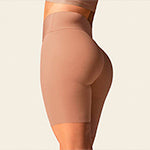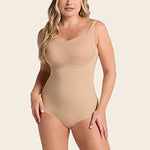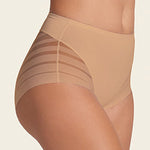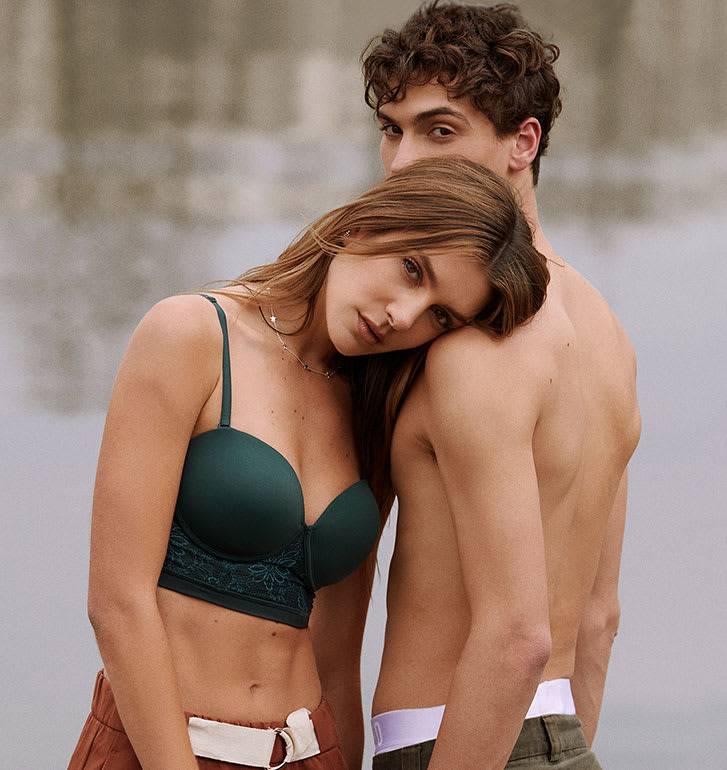How To Avoid a Bathing Suit Camel Toe: 7 Tip

I love the warmer weather because it brings plenty of opportunities to spend time outdoors, including poolside or at the beach. Whether you're planning on swimming, surfing or just lying in the sun, you want to be sure your swimsuit looks amazing. One swimwear-related wardrobe malfunction many women, including me, are anxious to avoid is the infamous camel toe. This unintentional fashion faux pas can make even the most confident among us feel self-conscious. Check out these tips on how to avoid camel toe while wearing a bathing suit.
What Is Camel Toe?
A camel toe is typically caused by tight-fitting fabric that presses against the crotch, resulting in the visual appearance and separation of a woman's vulva. The slang term describes how the outer genitalia appear when clothing is too tight in that area. Some women don't mind the appearance of a camel toe. However, other women wish to avoid going out in public showing a camel toe as they find it embarrassing or too provocative.
How To Avoid Camel Toe in Swimsuits
There are multiple factors that can result in a camel toe, whether you're wearing a one-piece bathing suit or a bikini. Once you know what to watch out for, you can choose an appropriate new bathing suit or correct issues in one you already own. Also, there are some things you can do to reduce your chances of unintentionally showing off a camel toe.
Tip 1: Choose the Correct Size and Fit
With multiple one- and two-piece styles available, you're likely to find a flattering swimsuit style that prevents a camel toe from forming at the most inopportune moments. Before you buy online, take the time to check out the swimwear size guide and read all the dimensions of the swimsuit that are provided. To benefit from this guide, you need to take accurate measurements of your body, even if it requires getting help from a friend.
Generally speaking, when fabric fits too tightly against the body, it's more likely to cause the appearance of a camel toe. However, swimwear that is too loose may allow the fabric to move around and get caught in the groin, also resulting in camel toe. That's why it's essential to choose a bathing suit that doesn't fit too tightly or loosely.
While trying on swimwear gives you an accurate representation of a suit's likelihood to create a front wedgie, you may not be permitted to try on these items without wearing your panties, which give a layer of protection against camel toe. If you must wear panties when trying on swimsuits, choose a thong style because that will be the closest thing to going without underwear.
Tip 2: Select Swimwear With Thicker Fabric
Thicker, high-quality fabrics are more likely to stay in place and less likely to ride up into your nether regions. Lightweight or overly stretchy fabrics are more likely to settle into cracks and crevices, especially during movement or after becoming wet. Also, make sure you choose a bathing suit with some stretch so that the fabric stays put in all the right places and is less likely to move when you do. If the material isn't very breathable, this can result in sweating, which also increases your risk of a camel toe as the fabric clings to damp skin. Our design team at Leonisa puts a massive amount of thought and effort into choosing the best high-quality fabrics for our pieces.
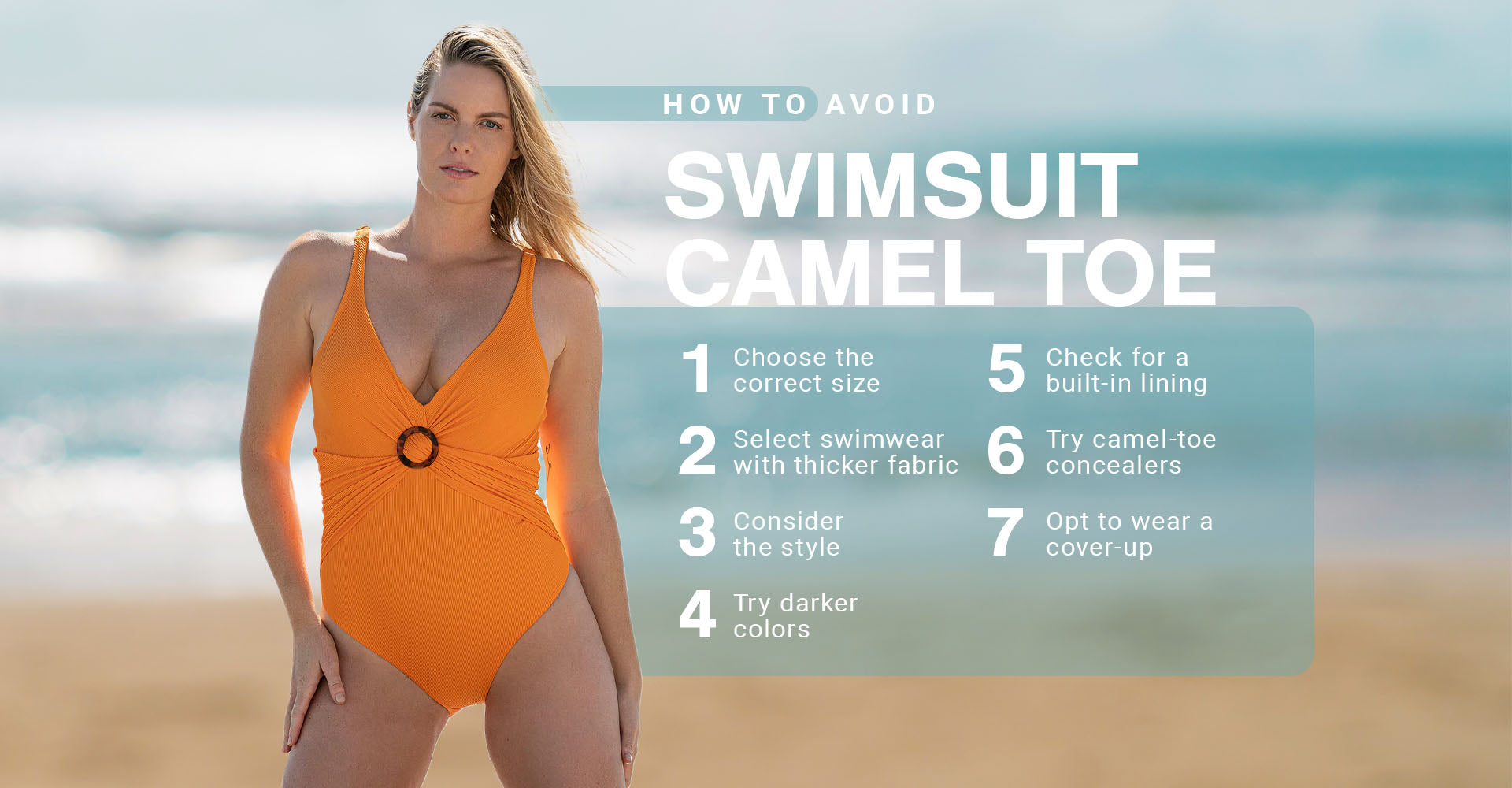
Tip 3: Consider the Style
Some styles of swimwear are more likely to result in camel toe because of their fit. For example:
- One-piece bathing suits: A one-piece bathing suit needs to fit well in all areas, including the bust, waist, and hips. Additionally, the swimsuit must be long enough from the shoulder to the groin to avoid pulling into the crotch, which is a common cause of camel toe in this type of swimwear. At Leonisa, we have a selection of quality one-piece bathing suits that are designed to keep wearers camel-toe-free.
- Low-rise bikini bottoms: This popular style of swimsuit is meant to sit low on the hips. A camel toe can appear if you're concerned that your bottoms are slipping down in the back. The more you pull up on the waist of these bikini bottoms, the more likely you are to have a camel toe. You could be setting the waist up higher than it was designed to be worn, creating more pull in the groin area.
- Thong bikini bottoms: The thong is designed as a triangle up front that can disappear on the rear of the swimsuit. While some thong styles are wide enough in the back to cover the crack, others are so narrow that they settle in at the rear. As the fabric of the thong bikini bottom wedges is tighter during movement, it can pull at the front of the bathing suit, causing the distinct separation of the labia that creates a camel toe.
- Suits with front seams: If there's a front seam down the middle of your bathing suit or bikini, you have a higher risk of a camel toe occurring because the ridge of fabric that creates the seam will likely settle in. You don't have to worry when choosing a Leonisa bathing suit because ours are designed without front seams!
Tip 4: Try Darker Colors
Fabrics that are lighter in color are more likely to show more of what's underneath. When you choose a bathing suit in a darker color, you can minimize the potential appearance of a camel toe even when the swimsuit gets wet.
Tip 5: Check for a Built-in Lining
Unfortunately, not all cute bathing suits are made the same, and some may even come without a lining at the bottom. While browsing your selections, check to see if the bathing suits you like have linings sewn in. These will give you a layer of protection against the camel toe. Note that Leonisa's swimwear bottoms all have linings.
If you already own a swimsuit that you love and aren't ready to part with, you can sew in your own lining. Just be sure that the fabric you choose is thick enough and breathable to avoid trapping moisture down there. Additionally, when sewing in the liner, be sure to just sew the sides along the leg openings, leaving the short sides open to prevent unsightly seams.

Tip 6: Try Camel-toe Concealers
Camel-toe concealers are typically made of silicone with one sticky edge to attach to your bathing suit bottom or directly to yourself. They can be reused multiple times. You can also use panty liners, but they need to be replaced with every use.
Alternatively, you can make your own reusable concealer from an old bra padding or shoulder pad. Measure the liner in your bathing suit bottom and cut out a rectangle that narrows toward one end. Once you've cut out a piece of padding in the appropriate size, simply slide it into one opening of the liner in your swimwear. The lining will hold the padding in place, providing you with adequate protection from camel toe.
Tip 7: Cover Up
If your favorite swimwear shows a camel toe and none of the other options feel right, you can always opt to wear a cover-up when you're out and about. Skirts, wraps and other beach outerwear can be both fashionable and functional. Having that extra safety of a cover-up always makes me feel more confident when I'm not feeling the best in my bathing suit bottoms.
Avoid Swimwear Camel Toe
Preventing a camel toe is as easy as choosing the right bathing suit from the start. At Leonisa, we cover all the bases to keep camel toe at bay. We use high-quality fabrics of the proper thickness in many colors and prints and include built-in linings for added protection. Additionally, many of our one-piece bathing suits have adjustable straps and backs to prevent pulling and tightening of the fabric. Whether you're looking for a one-piece swimsuit, a shapewear swimsuit or everyday shapewear, you'll find a wide range of styles and fabrics to complement your body type.
Image Credits
antstang/Shutterstock.com
